
© Foteini Christofilopoulou. (Click image for larger version)
Eifman Ballet
Up & Down
★★★✰✰
London, Coliseum
7 December 2016
Gallery of pictures by Foteini Christofilopoulou
www.eifmanballet.ru
The narrative of Boris Eifman’s latest ballet derives from F. Scott Fitzgerald’s fourth and final novel, Tender Is the Night; and the character names are the author’s creations. But, the enigmatic beauty of Fitzgerald’s title has been replaced by the pedestrian and rather more mundane Up & Down; although I suspect that it sounds a tad more romantic in Russian!
In truth, the ballet is up and down (or, more accurately, down and up) for, overall, the second act is a huge improvement on the first. Eifman has a predilection for psychological expressionism but he tackles the issues bluntly, in ways that can challenge the sensibilities of a British audience.
Eifman’s previous full-length ballet was a biography of Rodin, focussing largely on his mistress-muse, Camille Claudel who lived the last 30 years of her life in an asylum, which became the setting for the opening scene (and several others). Tender Is the Night’s main protagonist is the upwardly-mobile psychoanalyst, Dick Diver, thus providing Eifman with the impetus of Diver’s psychiatric clinic for a similar opening to Up & Down. But, the grotesque, wide-eyed, cartoonish representation of patients suffering from a range of mental health conditions makes for uncomfortable viewing.
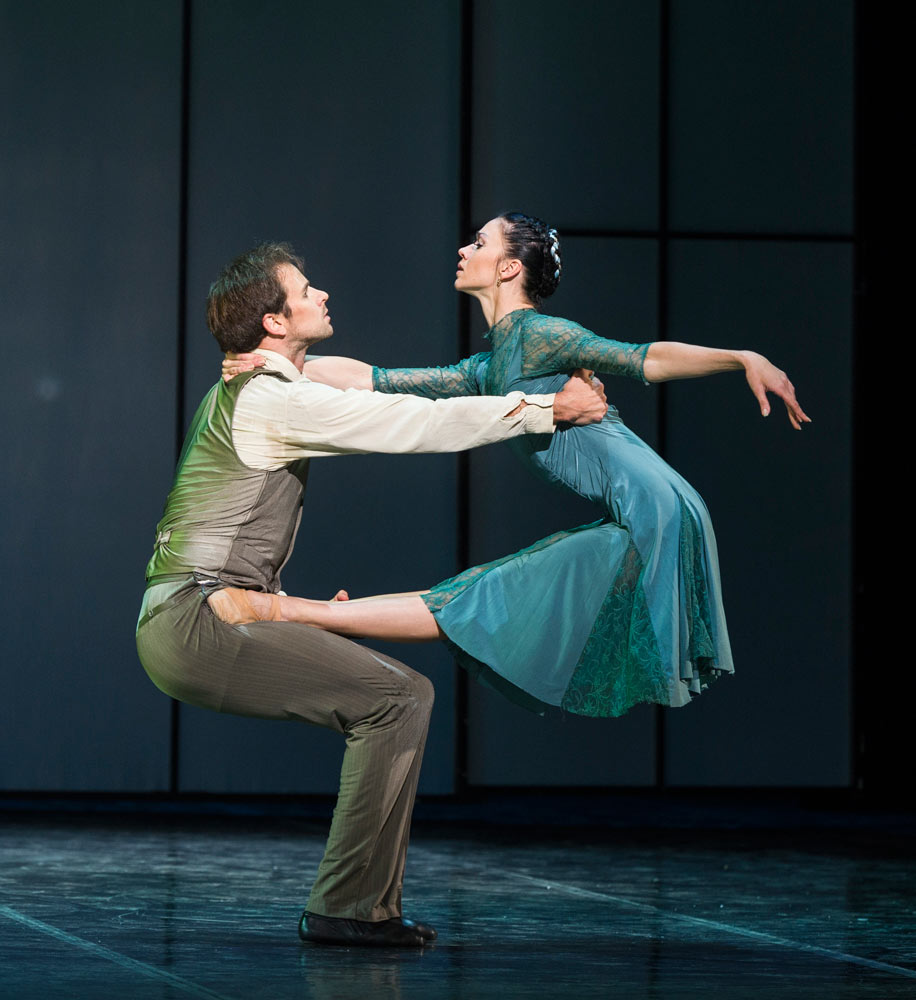
© Foteini Christofilopoulou. (Click image for larger version)
The antidote to concerns about an unpalatable representation of mental illness comes in Eifman’s challenging and inventive choreography, which has moved on from the fin de siècle decadence of Rodin to the American jazz age of the roaring twenties. His movement, as ever, is busy and theatrical, strong on musicality and replete with a fascinating range of gymnastic lifts and balances.
As in Fitzgerald’s novel, the narrative concerns Diver’s relationship with – and marriage to – Nicole Warren, a patient whose mental breakdown derives from an incestuous relationship with her mega-rich father. As Nicole’s mental health improves, both soon embark on affairs; Diver relinquishes his vocation to lead a bacchanalian life on the periphery of celebrity, descending through ever-decreasing circles of alcoholism and paranoia to complete the return journey – but, as a patient – to his former clinic.
One of Eifman’s great strengths lies in a distinctive clarity of story-telling. He manages a certain subtlety in dealing with the backstory of Nicole and her father that contrasts with his distinctly unsubtle approach to the psychiatric clinic and its patients. Another formidable advantage of any Eifman work is the sleek and athletic movement quality of his outstanding family of dancers, although here some of the ensemble dance numbers fell short of the energy and precision that I have enjoyed in the past: the exceptions being the basketball-themed College group number and the ensemble dance on the beach.

© Foteini Christofilopoulou. (Click image for larger version)
Oleg Gabyshev and Lyubov Andreyeva are an accomplished partnership with the capability to thrill. Their many duets (as Dick and Nicole) contained a plethora of complex lifts and holds performed in an uninterrupted flow of beautiful lines and shapes, with extreme flexibility, pliable spines and the permanent elegance of Andreyeva’s gorgeous flexed feet. Like finely-tuned machines, there is attention to every minutiae of detail while performing challenging and complex tasks. Gabyshev also impressed in three brief and expressive solos, notably to a solitary trumpet interpretation of George Gershwin’s Someone To Watch Over Me.
Orchestral versions of several familiar Gershwin compositions dominate the centre of this work, although it takes a while for his music to come to the fore as Up & Down opens and closes to classical pieces by Franz Schubert. The dissonance of the mental health episodes is matched by music from the Austrian composer, Alban Berg who was active in the Gershwin era. Some of the recordings seemed a little ancient but the “pick and mix” soundtrack generally made sense.
Dmitry Fisher played Nicole’s father as a cross between Harry Enfield’s LoadsaMoney – waving wads of cash – and a Texan Oil Baron, in his Stetson hat. Maria Abashova was the epitome of a sultry movie star to whom Diver turns for comfort as his marriage hits the rocks; and Igor Subbotin, portrays the tall and handsome extra-marital interest for Nicole. Although Eifman drives the story along with an impressive momentum, there seemed no time at all – apart from an interval – between the wedding and the marriage’s disintegration!
The Eifman dancers are busy, not least with countless costume changes (more than 300 costumes, in total). The various pastel shades of matching “his and her” beachwear were a highlight among Olga Shaishmelashvili’s impressive clothing designs, evoking an appropriate vintage feel for the Gatsby Age. As a cipher for the many challenges for an Eifman soloist, I noted that Igor Polyakov portrayed a patient suffering from agoraphobia (hiding permanently under a stool); was a regular member of the various corps de ballet dances; played a camera-clicking paparazzi; and ended as a manic movie director for the brief sub-plot of filming and premiering a silent epic, Caesar and Cleopatra (which had more than a passing resemblance to the plot device of The Dancing Cavalier in Singin’ in the Rain). I estimated eleven costume changes for Polyakov alone.

© Foteini Christofilopoulou. (Click image for larger version)
There is a vibrant, colourful cartoon-strip feel to the ballet, especially throughout the second act. Zinovy Margolin’s sets also embraced an evocation of the age with neon-lit symbolism in the backdrops, including a psychedelic, mesmerising sun/moon/eye device; and a cleverly constructed multi-purpose platform and staircase that was effectively lit to provide a number of scenarios. Eifman designed some of the lighting himself, augmenting the work of his regular lighting consultant, Gleb Filshtinsky.
Up & Down is a well-paced ballet with no let-up in its momentum. There is clarity in its depiction of the key themes in Tender Is the Night, both in terms of drama and design. Eifman’s choreographic style is unparalleled in its expansive range of movement and expressiveness; and his dancers are superb. It is just the comic book representation of mental health that left me with a feeling of unease.












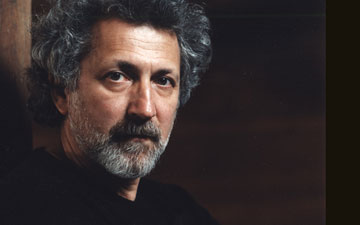
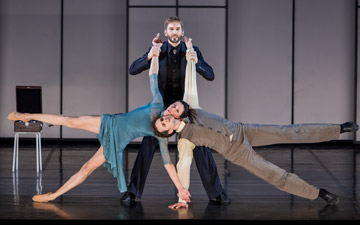

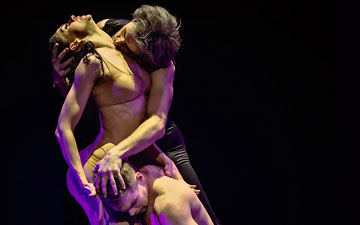
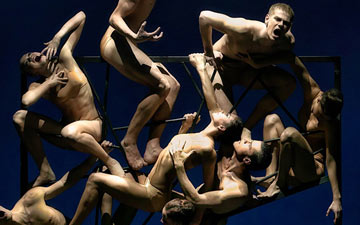
You must be logged in to post a comment.